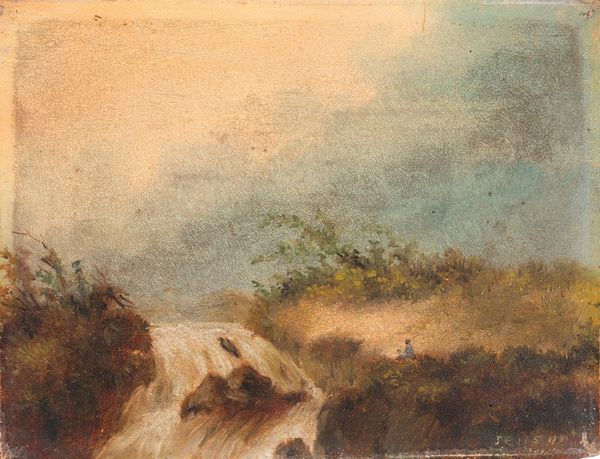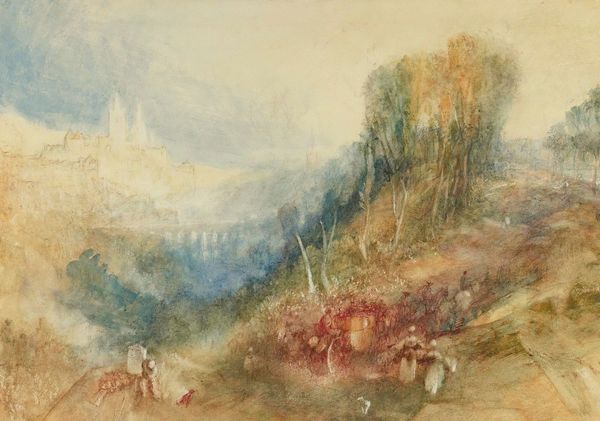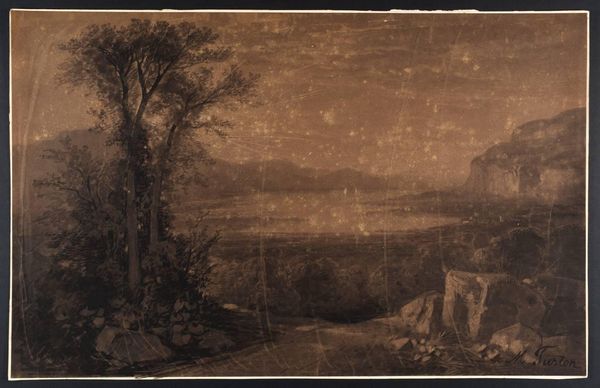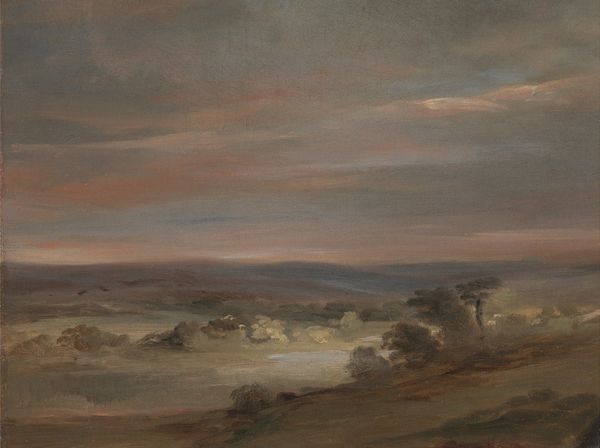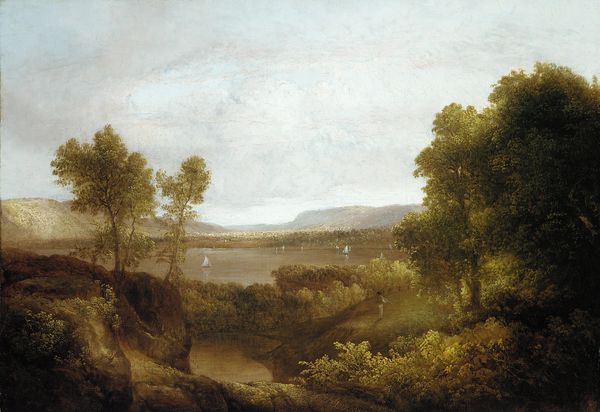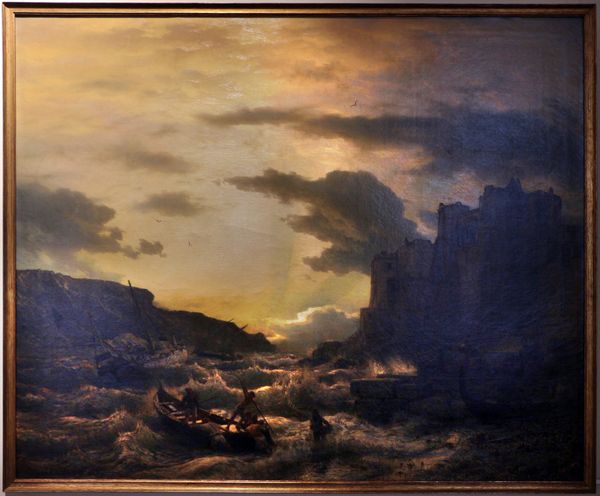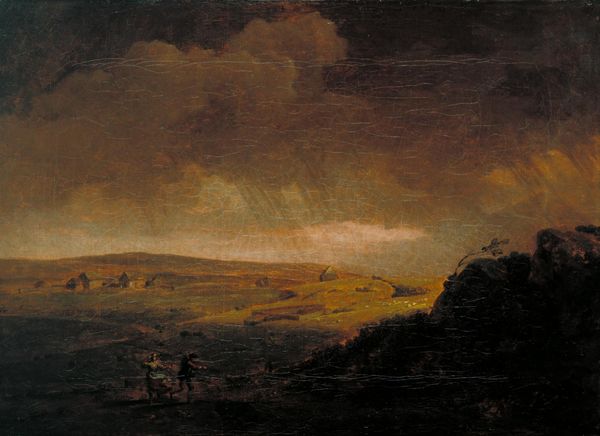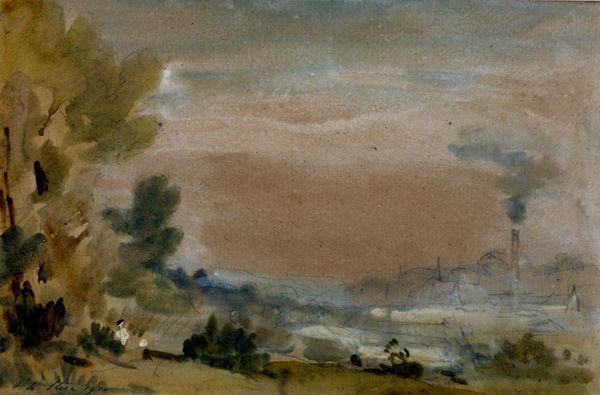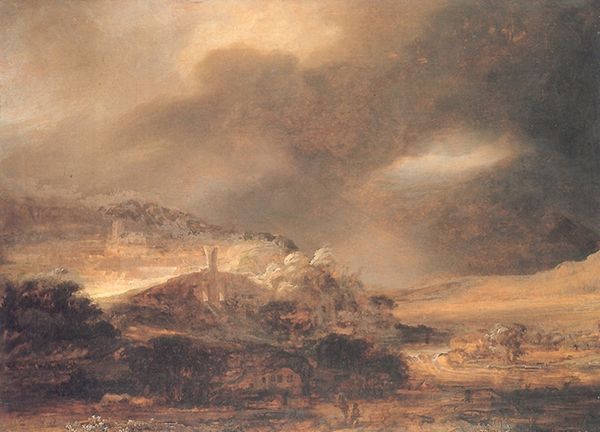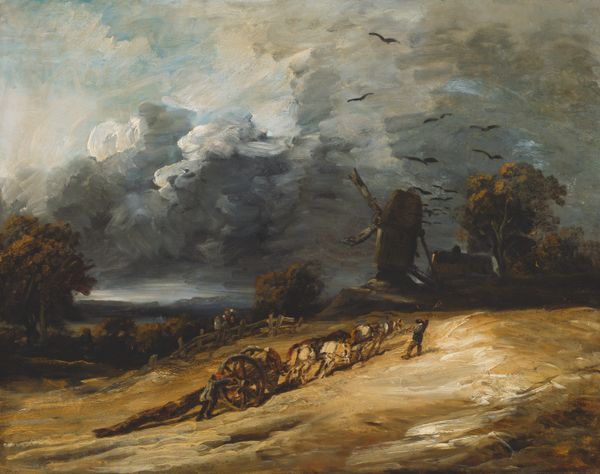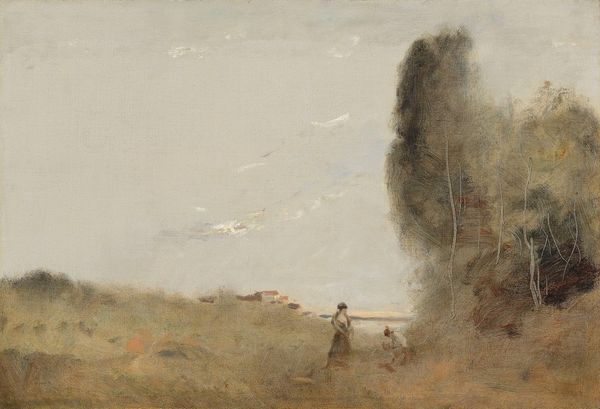
Dimensions: support: 1968 x 3258 mm frame: 2400 x 3685 x 175 mm
Copyright: CC-BY-NC-ND 4.0 DEED, Photo: Tate
Curator: Here we have John Martin’s epic painting, "The Last Judgement." It’s a vast canvas, painted sometime in the mid-19th century. Editor: It’s incredibly dramatic! The contrast between the bright, ethereal upper portion and the dark, chaotic lower part is striking. You can almost feel the weight of despair. Curator: Absolutely. Martin was deeply affected by the social injustices of his time, and this painting reflects anxieties about morality, class, and the consequences of societal failings. Editor: Thinking about the means of production, I wonder about the pigments he used to create these intense contrasts. What kind of labor went into preparing the materials for a painting of this scale? Curator: That’s a really important question to consider. It ties into the larger narrative of how art reflects the social conditions of its creation and consumption. Editor: Looking at it now, I’m struck by how it captures a sense of profound upheaval through its materiality. Curator: Indeed, it prompts reflection on how societal structures and power dynamics shape our understanding of morality.
Comments
tatebritain 5 months ago
⋮
http://www.tate.org.uk/art/artworks/martin-the-last-judgement-t01927
Join the conversation
Join millions of artists and users on Artera today and experience the ultimate creative platform.
tatebritain 5 months ago
⋮
This was part of a triptych (series of three works), with The Great Day of His Wrath and The Plains of Heaven. The pictures were produced at the end of John Martin’s career, with the intention of touring them. They travelled extensively, even going on show in America and Australia. Their fame and influence helped pave the way for modern forms of popular entertainment – including blockbuster cinema. Gallery label, August 2019
